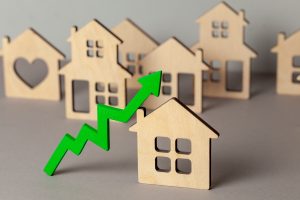 Record high home prices compounded with a shortage of available units have caused home prices to shoot up 18% on average across the nation.
Record high home prices compounded with a shortage of available units have caused home prices to shoot up 18% on average across the nation.
CoreLogic’s latest Home Price Index (HPI) and HPI Forecast for June 2021 report by CoreLogic, a global property information, analytics and data-enabled solutions provider, found that as mortgage rates remain near record lows, the ongoing challenges of persistent demand, a rebounding economy, and constricted supply will continue to put upward pressure on home prices.
“Home price appreciation continues to escalate as millennials entering their prime homebuying years, renters looking to escape skyrocketing rents and deep pocketed investors drive demand,” said Frank Martell, President and CEO of CoreLogic. “On the supply side, it is also the result of chronic under building, especially of affordable stock. This lack of supply is unlikely to be resolved over the next 5 to 10 years without more aggressive incentives for builders to add new units.”
According to CoreLogic Principal Economist Molly Boesel, the July 2021 HPI was up from the July 2020 gain of 5.3% and was the highest 12-month growth since the series began in 1976.
The report analyzes homes in four price tiers that are calculated relative to the median national home sale price. The lowest tier increased by 22.1% year-over-year in July compared to 20 % for the low-to-middle price tier. The middle-to-moderate tier increased to 19.9% and the high tier increased to 19.1%.
“While appreciation was highest for lower-priced homes, the difference in appreciation rates for the four price tiers is converging, suggesting that supply is restricted at all prices levels,” Boesel wrote.
At the state level, every state saw home prices appreciate, but states in the West were found to have the strongest figures.
“Idaho appreciated 33.6% year over year in July followed by Arizona with 28.4%. At the low end, Washington, D.C., saw home prices increase 5.9%, and home prices in North Dakota increased 6.1%,” Boesel said. “The surge in home price appreciation was felt across the country, with all states showing higher appreciation in July 2021 than in July 2020. Idaho had the biggest acceleration in home price growth from July 2020 to July 2021. An influx of buyers in search of relatively less expensive housing drove prices 22.4 percentage points higher over the year in Idaho.”
Boesel added, "With mortgage rates remaining near record lows, the ongoing challenges of persistent demand and constricted supply continue to put upward pressure on home prices, and home price gains reached the highest annual growth since the inception of the CoreLogic HPI in July. This price gain has far exceeded income growth and eroded affordability. In the coming months, this will temper demand and lead to a slowing in price growth.”
The report gleaned its information from public, contributory and proprietary sources including over 4.5 billion records spanning more than 50 years, providing detailed coverage of property, mortgages and other encumbrances, consumer credit, tenancy, location, hazard risk, and related performance information.

 DSNews The homepage of the servicing industry
DSNews The homepage of the servicing industry









